Jade Emperor Pagoda
Jade Emperor Pagoda
Ways to Experience this attraction
Saigon: Half-Day Guided City Tour and Jade Emperor Pagoda
4.0 hour
Deals start ₹4,611
VIEW DEAL
From Ho Chi Minh City: Mekong Delta Full-Day Tour
8.0 hour - 9.0 hour
Deals start ₹1,960
VIEW DEAL
Private Tour to Mekong Delta & Vinh Trang Pagoda 1 Day
7.0 hour
Deals start ₹8,958
VIEW DEAL
Vinh Trang Pagoda And My Tho Boat tour 1 Day
10.0 hour
Deals start ₹2,220
VIEW DEAL
From HCMC: Mekong Delta and Vinh Trang Pagoda 1 day
1.0 day
Deals start ₹3,143
VIEW DEAL
Ho Chi Minh City: Guided Half-Day Tour with Hotel Pickup
4.0 hour
Deals start ₹2,389
VIEW DEAL
Jade Emperor Pagoda, Ho Chi Minh City Overview
Jade Emperor Pagoda is a spectacular Taoist shrine in Ho Chi Minh City. Built in 1909 by a migrant Cantonese community, the primary deity here is the 'King of Heaven' Chua Ngoc Hoang, who regulates the entry of souls into the afterlife. Also known as Tortoise Pagoda, it is over 100 years old and is filled with mythical statues.
The grotesque fate that awaits sinners is intricately carved on the temple's walls, which is often remains shrouded behind incense smoke.
Read More
Read More on Jade Emperor Pagoda
Tips on Visiting Jade Emperor Pagoda
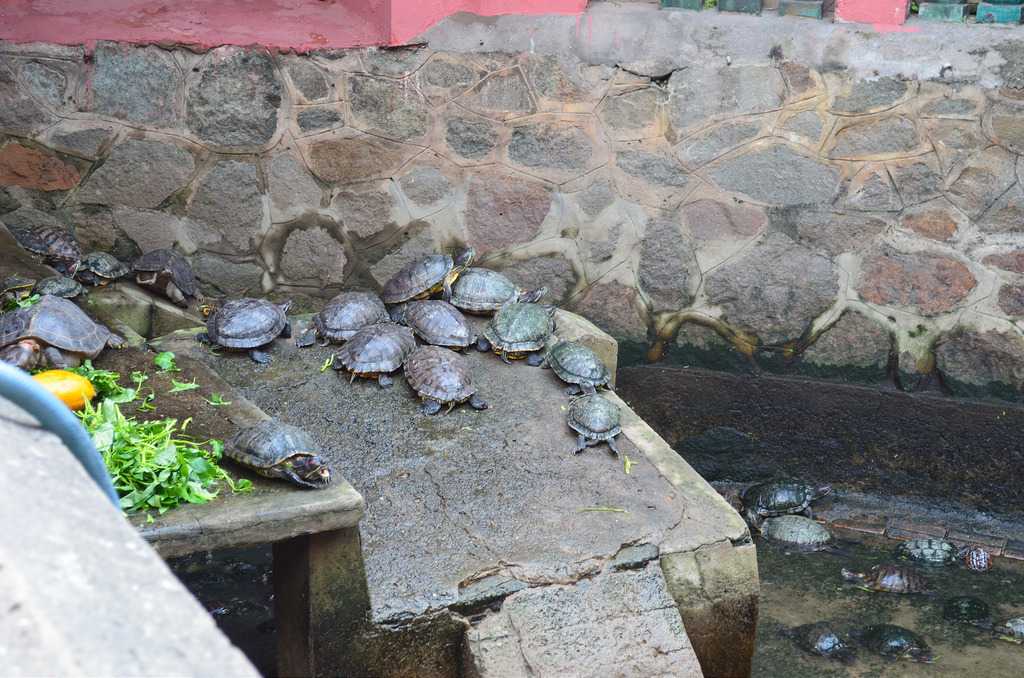
- The Jade Emperor Pagoda becomes particularly crowded during Tet, the Vietnamese New Year.
- There is no entry fee to Jade Emperor Pagoda. However, you can leave small, customary donations.
- It is a common practice to release a turtle into the pond outside. They can be bought in the shops outside the pagoda. Releasing it into the pond is said to be a symbol of hope and good luck. This is particularly popular amongst married couples.
- Because of the architecture of Jade Emperor Pagoda in which rooms and hallways are located close to each other, it is common for the smoke of incense sticks to make the air quite musty. Visitors with breathing problems, or young children, may find it too much to handle.
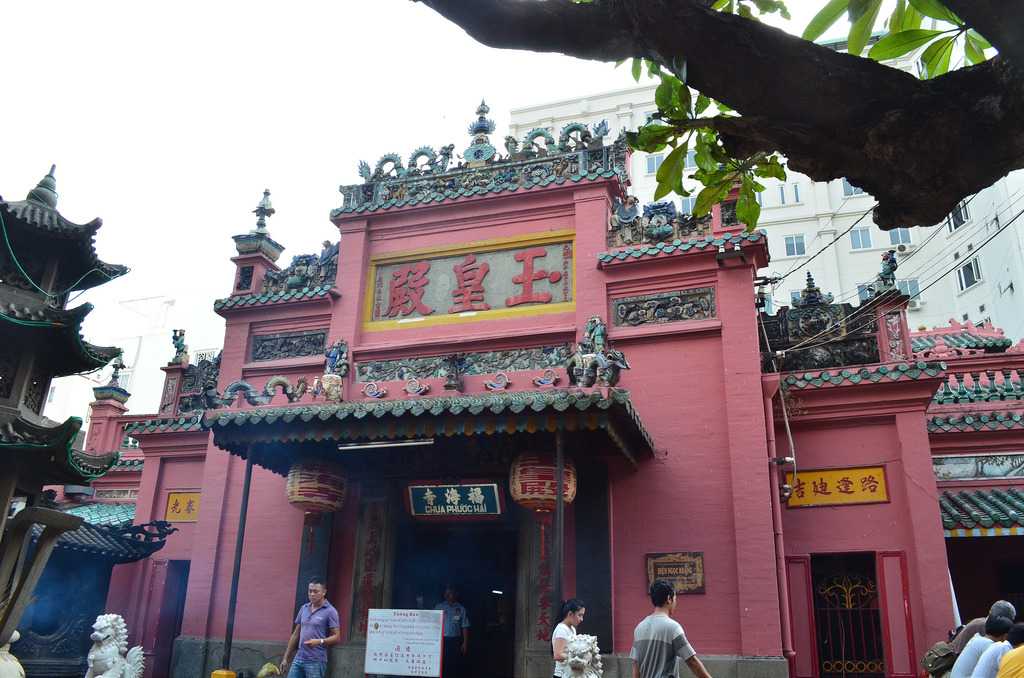
A landmark in Ho Chi Minh City, the Jade Emperor Pagoda is a beautiful temple that is an integral part of the city's diversity. Originally built by Chinese immigrants and later adopted by Vietnamese monks, it depicts the judgement of each person at death to determine if they deserve to be sent to heaven or hell. It is outside city limits, but certainly worth the travel!
How to Reach Jade Emperor Pagoda
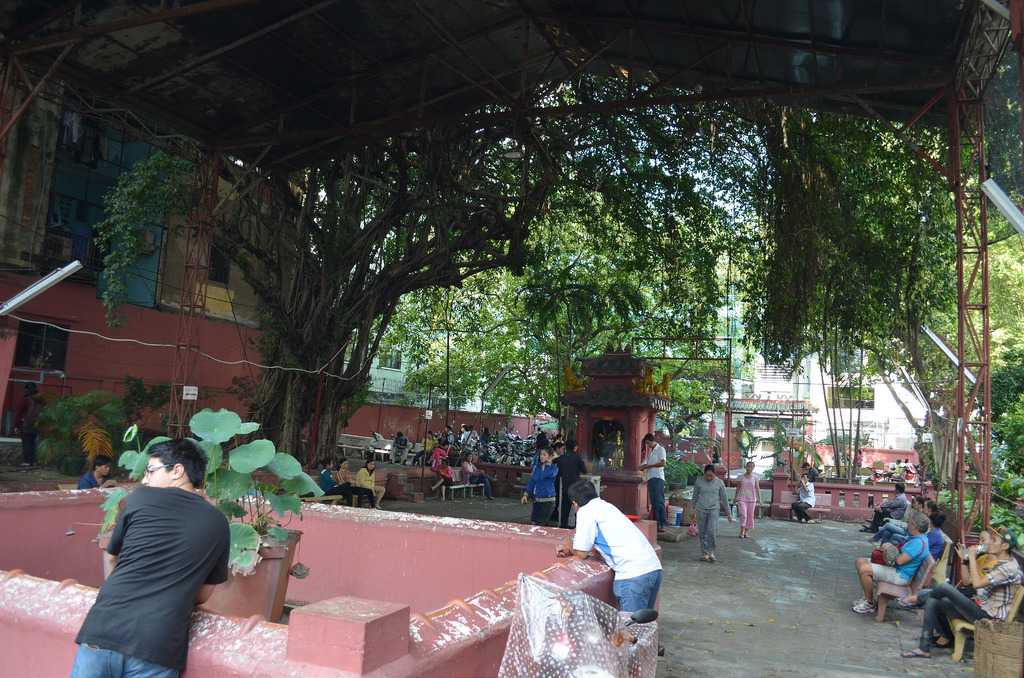
The Jade Emperor Pagoda is located outside the city centre in the district of Ben Thanh, just north of the Botanical Gardens. Because it is close to the edge of city limits, it isn't easy to find public transport that reaches here. It's best to hire a bike or taxi instead. From Independence Palace or Reunification Palace in District 1 of Ho Chi Minh City, a taxi to the pagoda should cost around VND 50,000 (INR 50). There are many bus stops within walking distance of the temple, accessible by bus lines 18, 31, 36, 45, 93, and 150.
Jade Emperor Pagoda Architecture
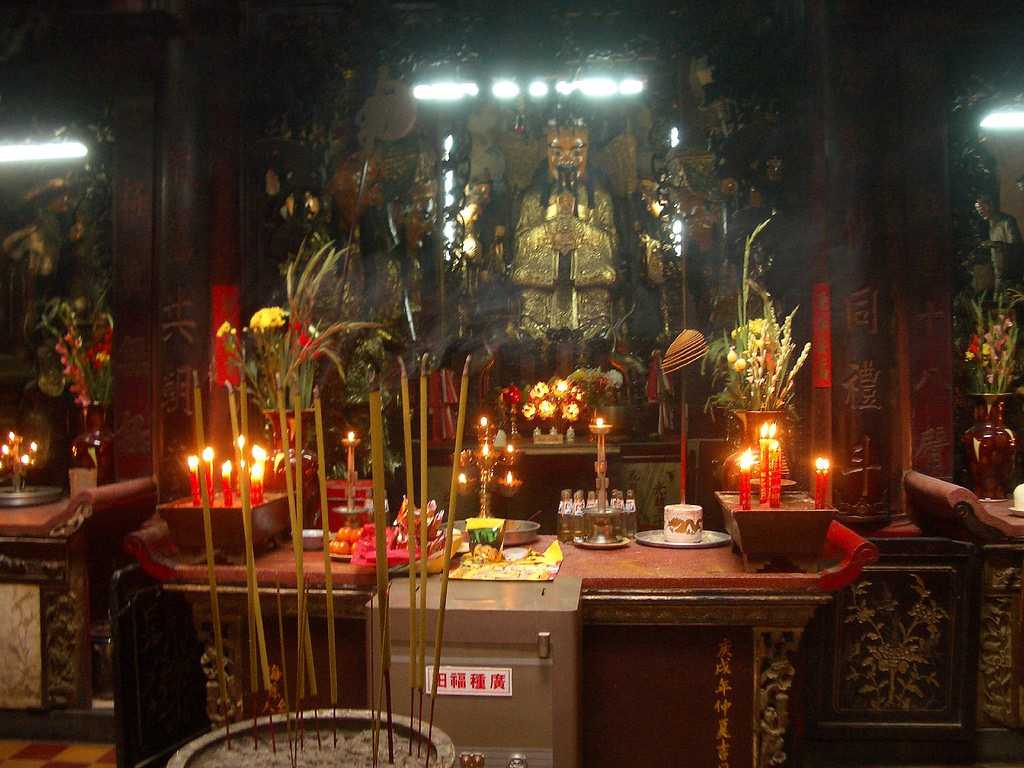
As a temple dedicated to the King of Heaven, the Jade Emperor Pagoda attempts to re-create each person's reckoning to determine whether they will go to heaven, purgatory or hell. Inside the main building, you'll first find two Taoist figures with menacing expressions, on either sides, dedicated to generals defeating foes of Taoist lore, stepping on these demons. Moving into the heart of the temple, you'll find a statue of the Jade Emperor in royal robes. He is flanked by four statues on all sides. These statues, called Tu Dai Kim Cuong ("Four Diamonds") are said to be his guardians, named after the hardest material on the planet. In the next chamber resides the Tao leader of Hell called Thanh Hoang. This chamber is filled with intimidating figures of gods who dispense justice to all visitors, rewarding the good and punishing the bad. Most popularly, this chamber contains the famous Hall of Ten Hells. This is a large, wooden panel sprawled across the wall that illustrates the kind of torment waiting for those who do not follow the path of goodness.
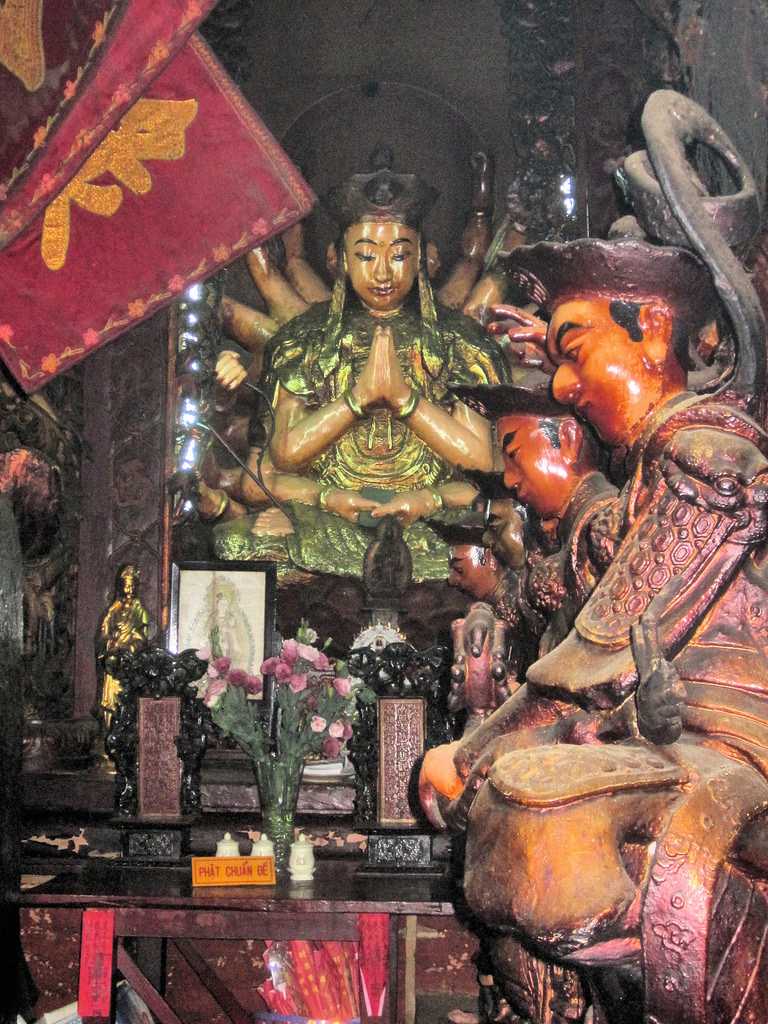
Both Good and Bad, at Jade Emperor Pagoda (Source)
After this humbling chamber, the next room contains the deity of fortune and finance. Dubbed 'the City God', he wears a hat that says 'with one glance, money is given' in Chinese. It is customary to offer money into the box before the figure and rub a piece of red paper into his hand for good luck. The next room contains aims to depict the many characteristics of humans. It features 12 statues of women, sitting in two rows of six. The presiding deity here is Kim Hoa Thanh Mau, the goddess of all women. When you move along upstairs, you’ll find a hall dedicated to another goddess, Quan Am, the goddess of mercy. Beside this hall is the chamber most popular amongst women and married couples. It is the room for Kim Hua, the goddess of fertility. You’ll find many statues of women and children here. Many women and couples come to this room to pray for children or their own. Finally, the last room is located on the topmost floor of the pagoda. It is dedicated to Kuan Yin, an important deity of any Taoist temple.
Jade Emperor Pagoda History
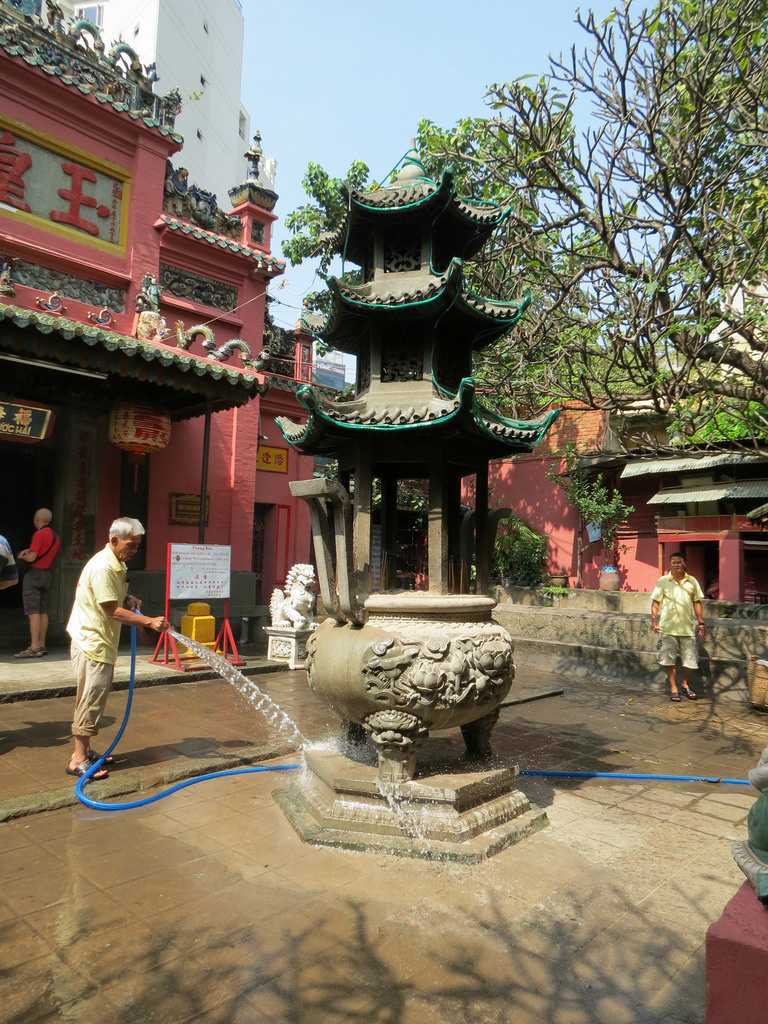
The Jade Emperor Pagoda was completed in 1909. It has fascinating woodwork and Chinese characters throughout its halls, a sign of the painstaking effort that went into its construction by its devout Cantonese creators. In 1982, it was handed over to a Vietnamese monk called Thich Quang Tu. Ever since, the pagoda symbolises the union of the Chinese and Vietnamese in Ho Chi Minh City. Initially called Jade Emperor Pagoda emperor by the Cantonese, its name was changed to Chua Phuoc Hai Temple to represent Buddhist beliefs. From its intricate carvings to its iconic red color, this pagoda is breathtaking.
